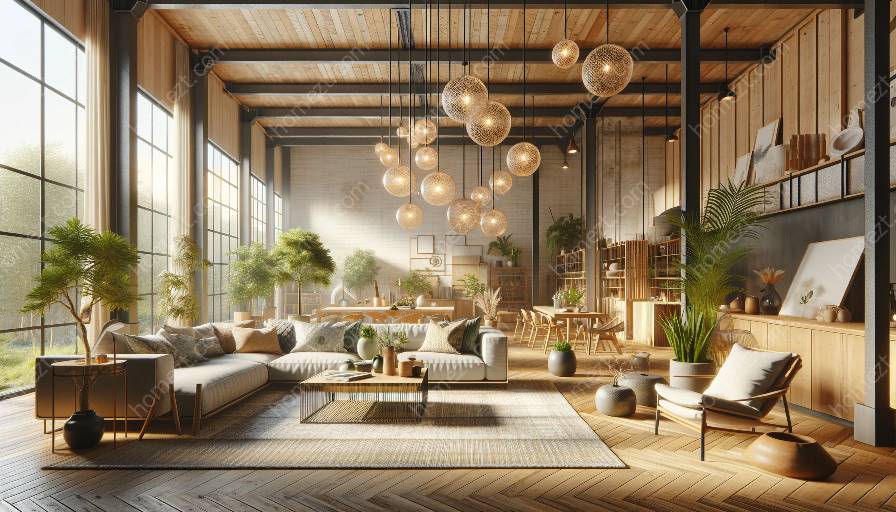Sustainable design encompasses principles and practices that aim to minimize the negative impact on the environment, while also promoting human health and well-being. This approach to design emphasizes the use of renewable resources, energy efficiency, and environmentally friendly materials. By integrating sustainable and eco-friendly design principles into interior design and styling, we can create spaces that not only look beautiful but also contribute to a healthier environment and improved quality of life.
The Environmental Benefits of Sustainable Design
One of the key advantages of sustainable design is its positive impact on the environment. By prioritizing energy efficiency and minimizing waste, sustainable design helps reduce the carbon footprint associated with construction and operation of buildings. This, in turn, contributes to the conservation of natural resources and the preservation of ecosystems. Sustainable design also promotes the use of renewable energy sources, such as solar and wind power, reducing reliance on non-renewable resources and decreasing greenhouse gas emissions.
Furthermore, sustainable design encourages the use of eco-friendly materials, such as recycled or upcycled products, natural fibers, and low-impact finishes. These materials not only minimize the depletion of natural resources but also support a healthier indoor environment by reducing the presence of harmful chemicals and volatile organic compounds (VOCs).
Human Health Benefits of Sustainable Design
In addition to its environmental advantages, sustainable design has a direct impact on human health and well-being. By enhancing indoor air quality and minimizing exposure to toxins, sustainable design creates healthier living and working environments. The use of natural lighting, non-toxic paints, and low-emission furniture contributes to better air quality and reduces the risk of respiratory problems and allergies.
Moreover, sustainable design promotes the incorporation of biophilic elements into interior spaces, such as indoor plants and natural materials, which have been shown to reduce stress, enhance creativity, and improve cognitive function. Access to natural light and views of greenery also contribute to increased productivity and overall satisfaction in the built environment.
Integrating Sustainable Practices into Interior Design
When it comes to interior design and styling, integrating sustainable and eco-friendly principles can be both fulfilling and impactful. By choosing furniture and decor made from environmentally friendly materials and supporting local artisans and craftspeople, interior designers can align their creative vision with sustainability. Additionally, incorporating energy-saving fixtures, such as LED lighting and smart thermostats, can further enhance the eco-friendly nature of interior spaces.
Furthermore, the concept of upcycling and repurposing can be integrated into interior design, giving new life to old items and reducing the overall demand for new products. Incorporating sustainable design elements doesn't mean compromising on style and aesthetics; in fact, it can inspire unique and visually stunning interiors that stand out for their commitment to sustainability.
Conclusion
Sustainable design offers numerous benefits for both the environment and human health. By embracing eco-friendly and sustainable principles, interior designers and stylists can create spaces that not only look beautiful but also contribute to a healthier and more sustainable future. The integration of sustainable design into interior spaces not only helps reduce the environmental impact but also enhances the well-being of occupants, fostering a harmonious relationship between human beings and their surroundings.


























